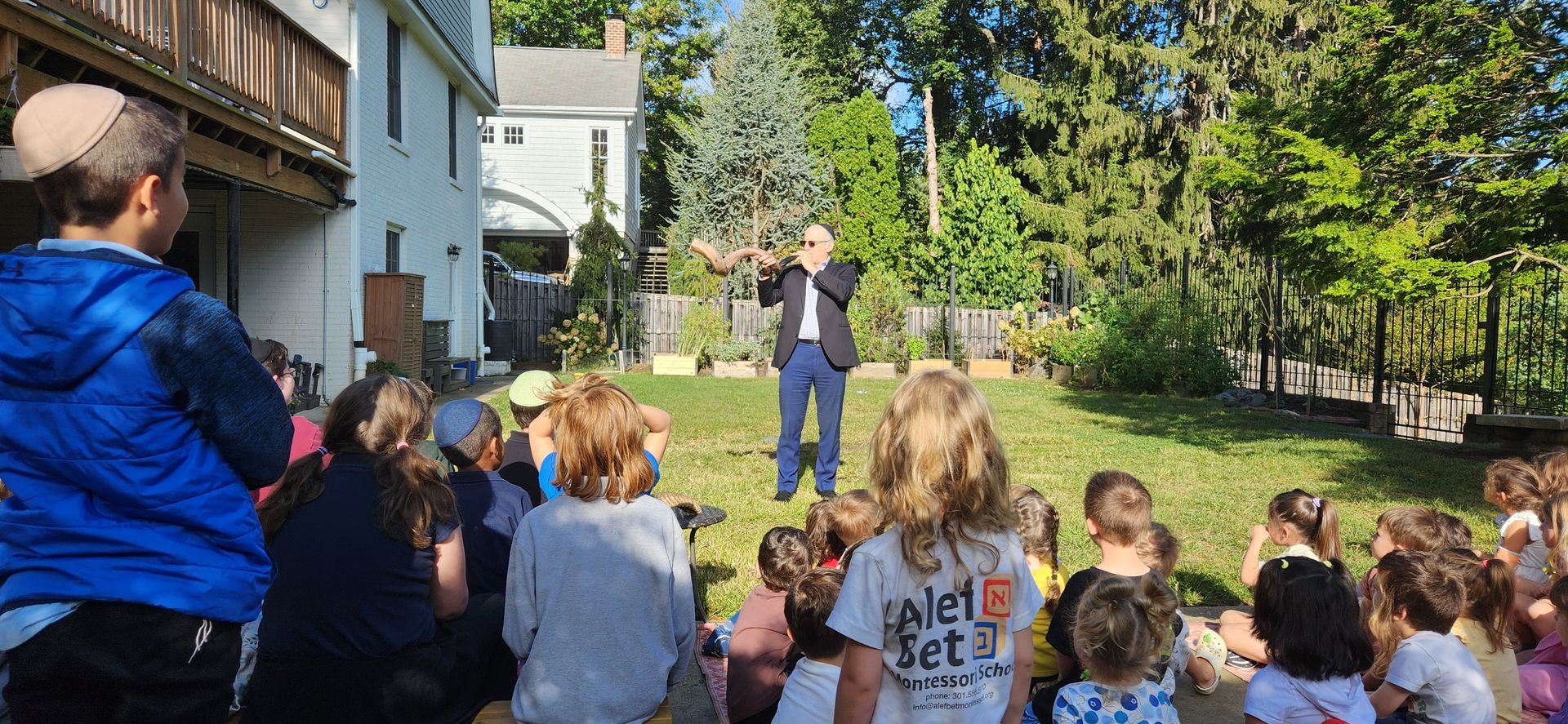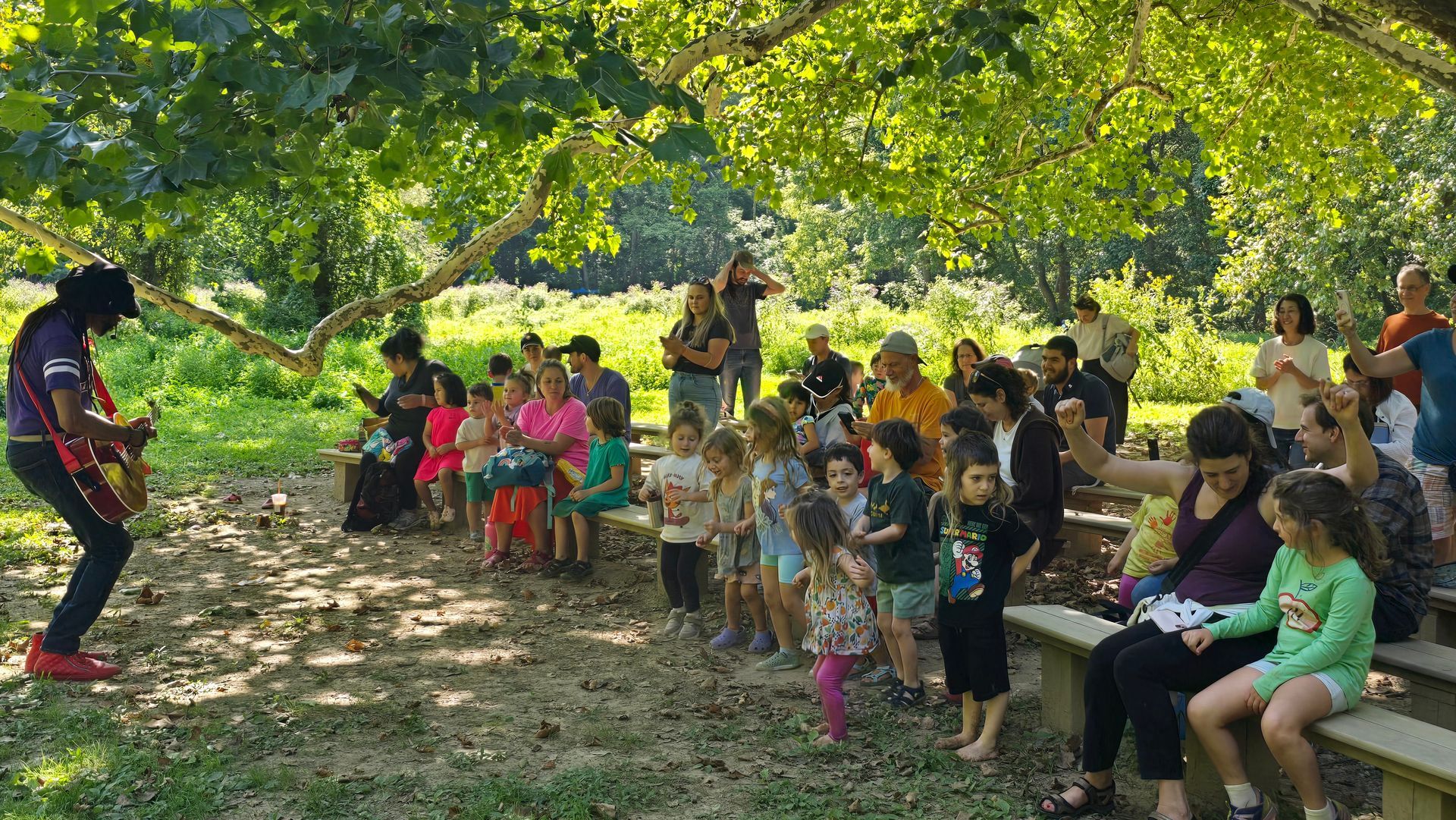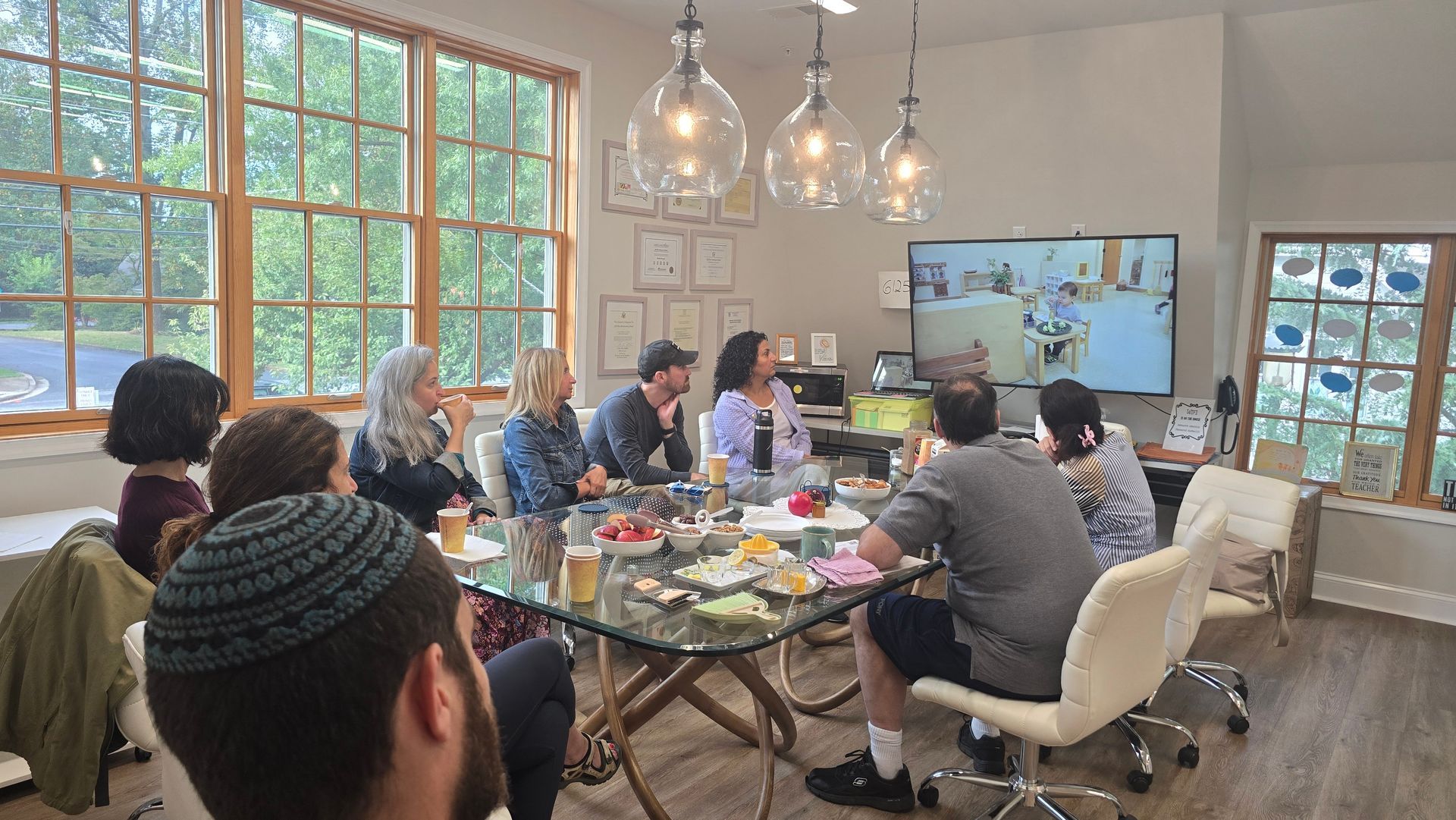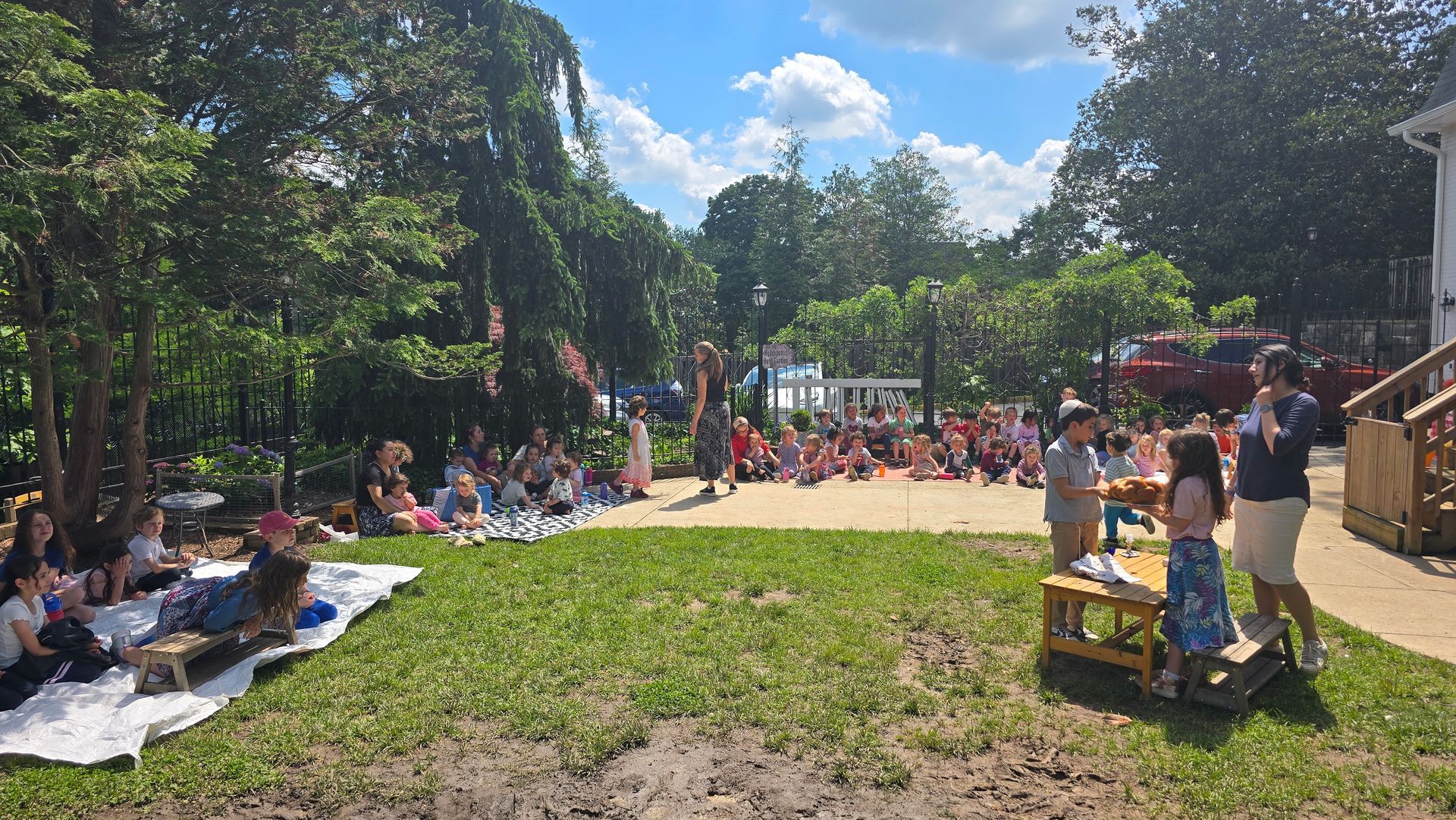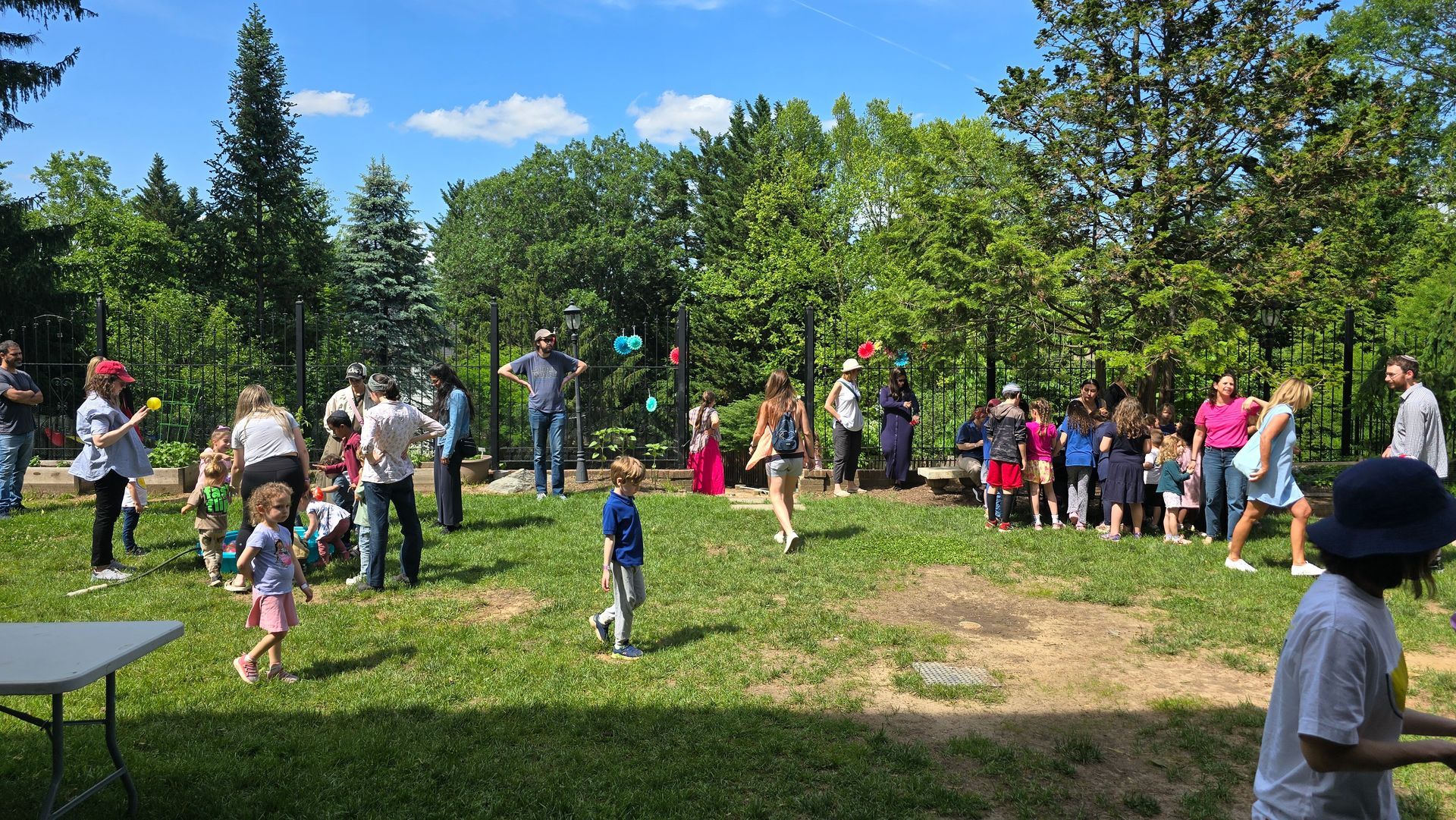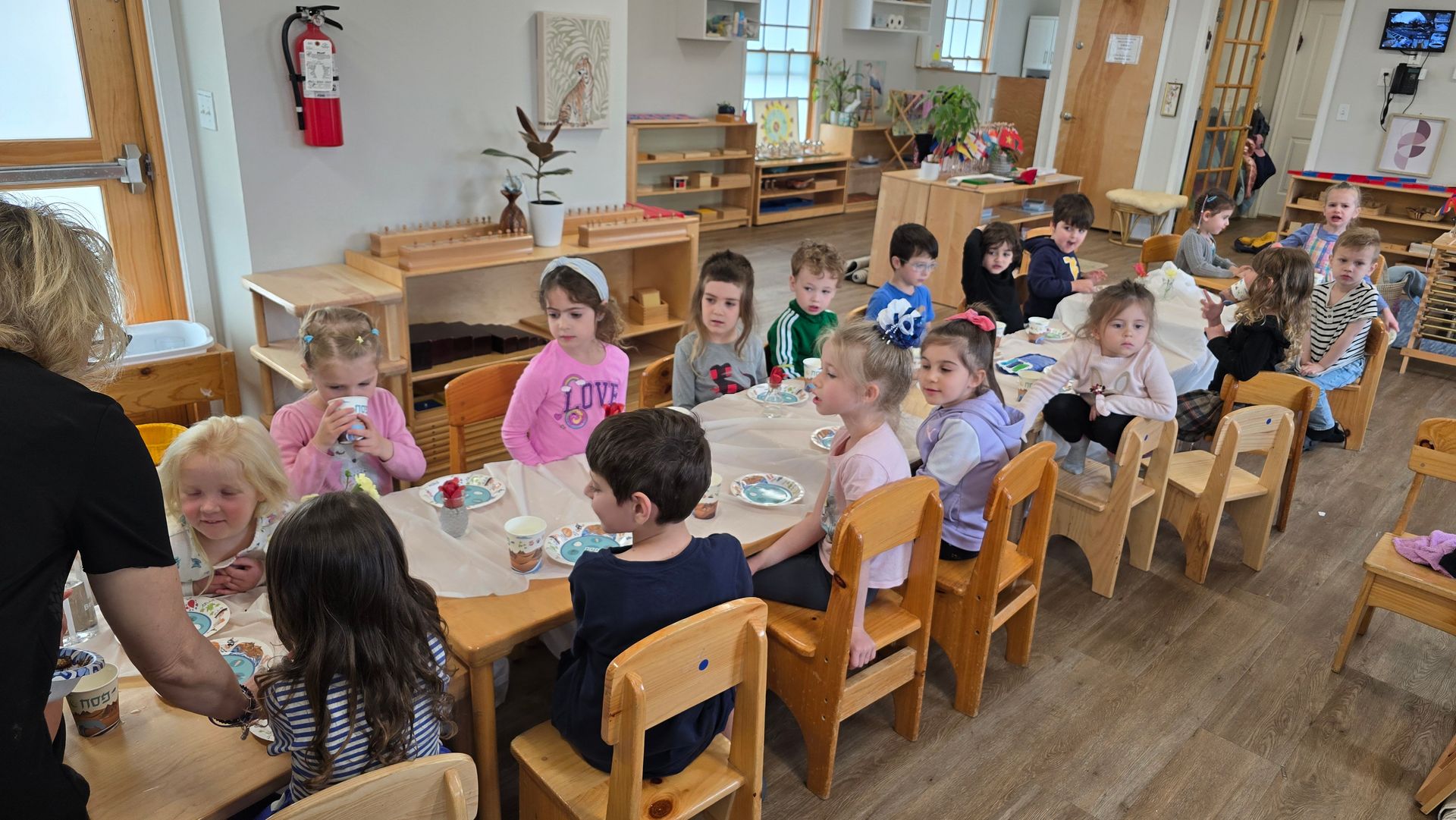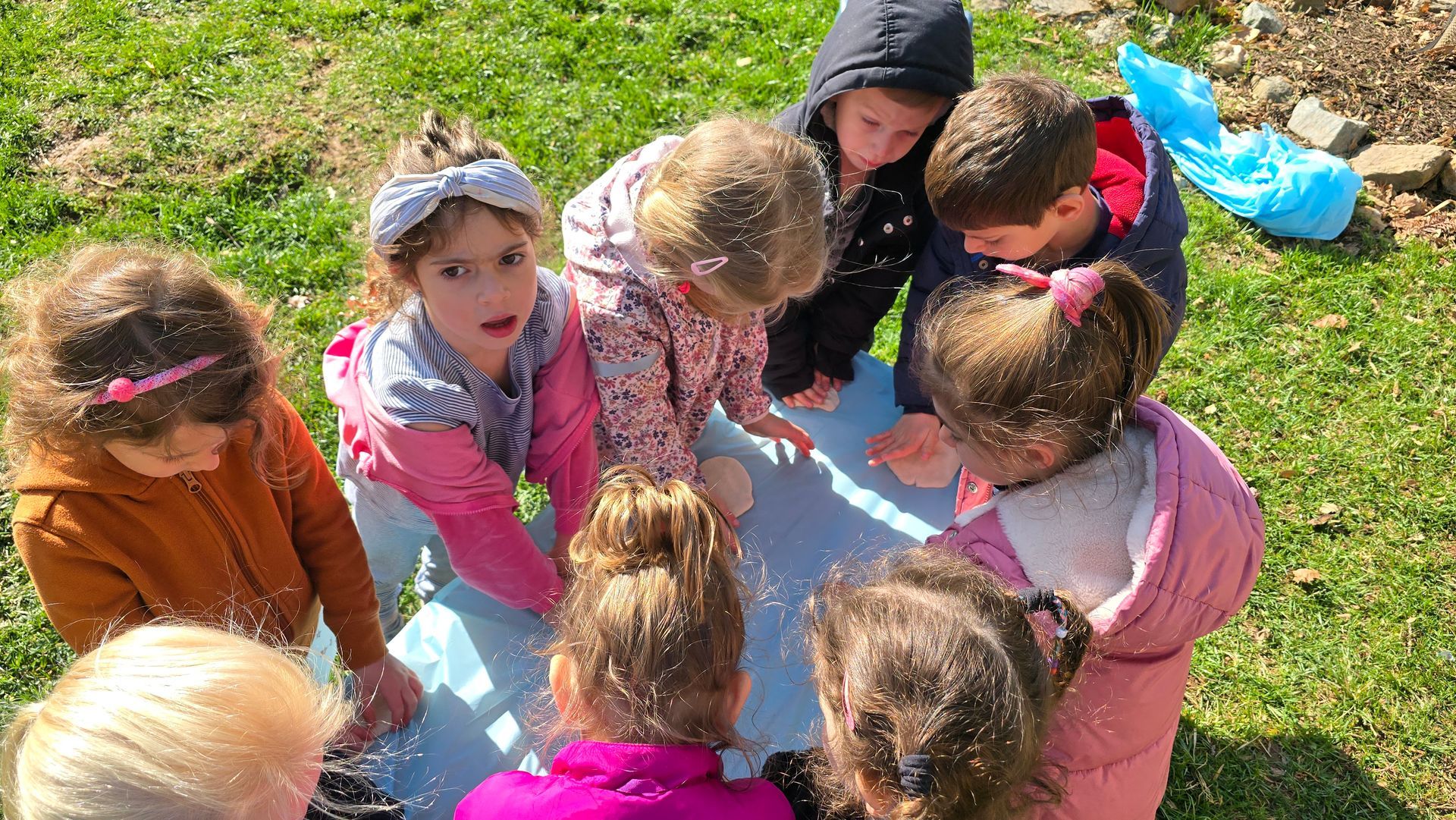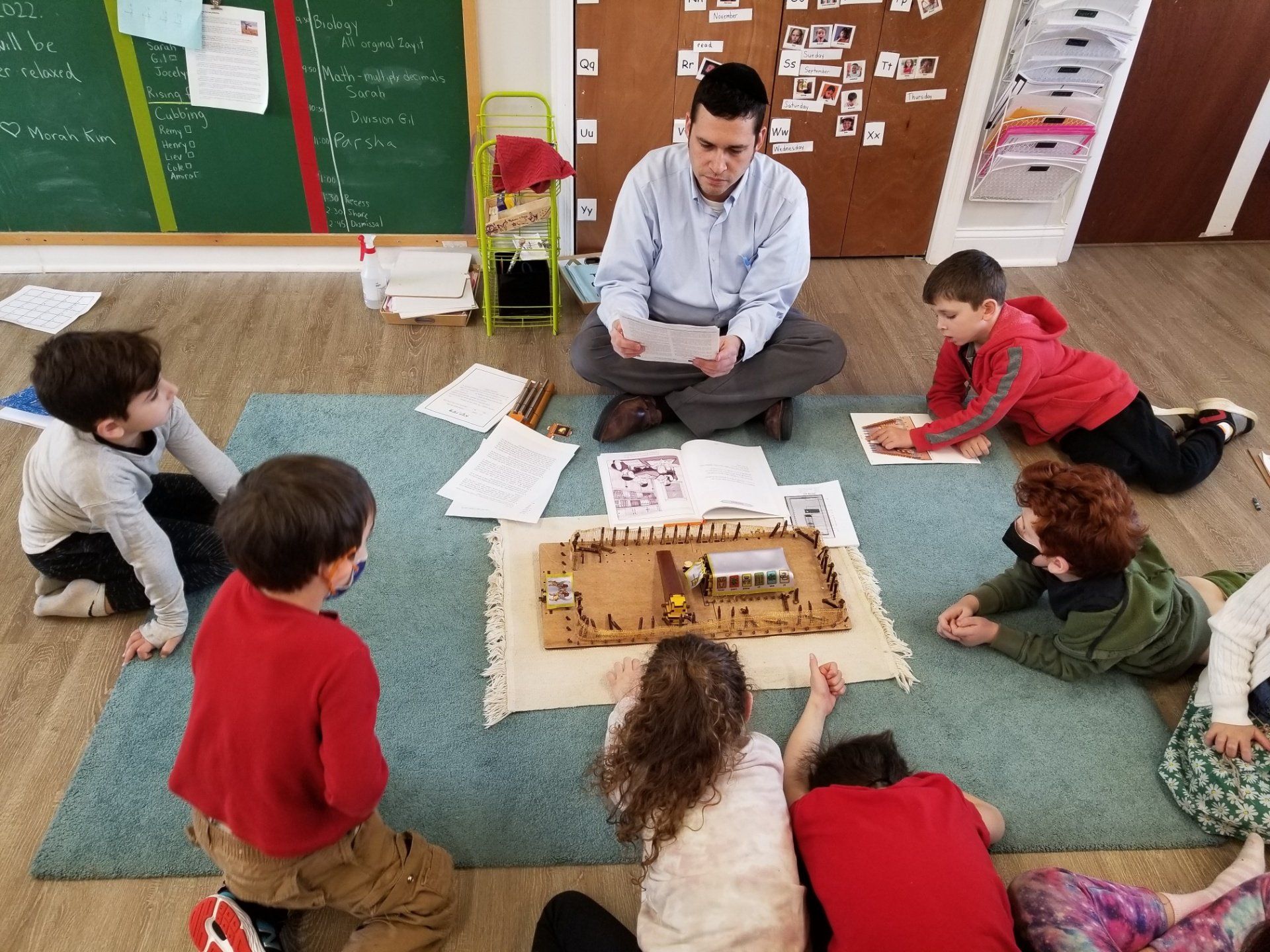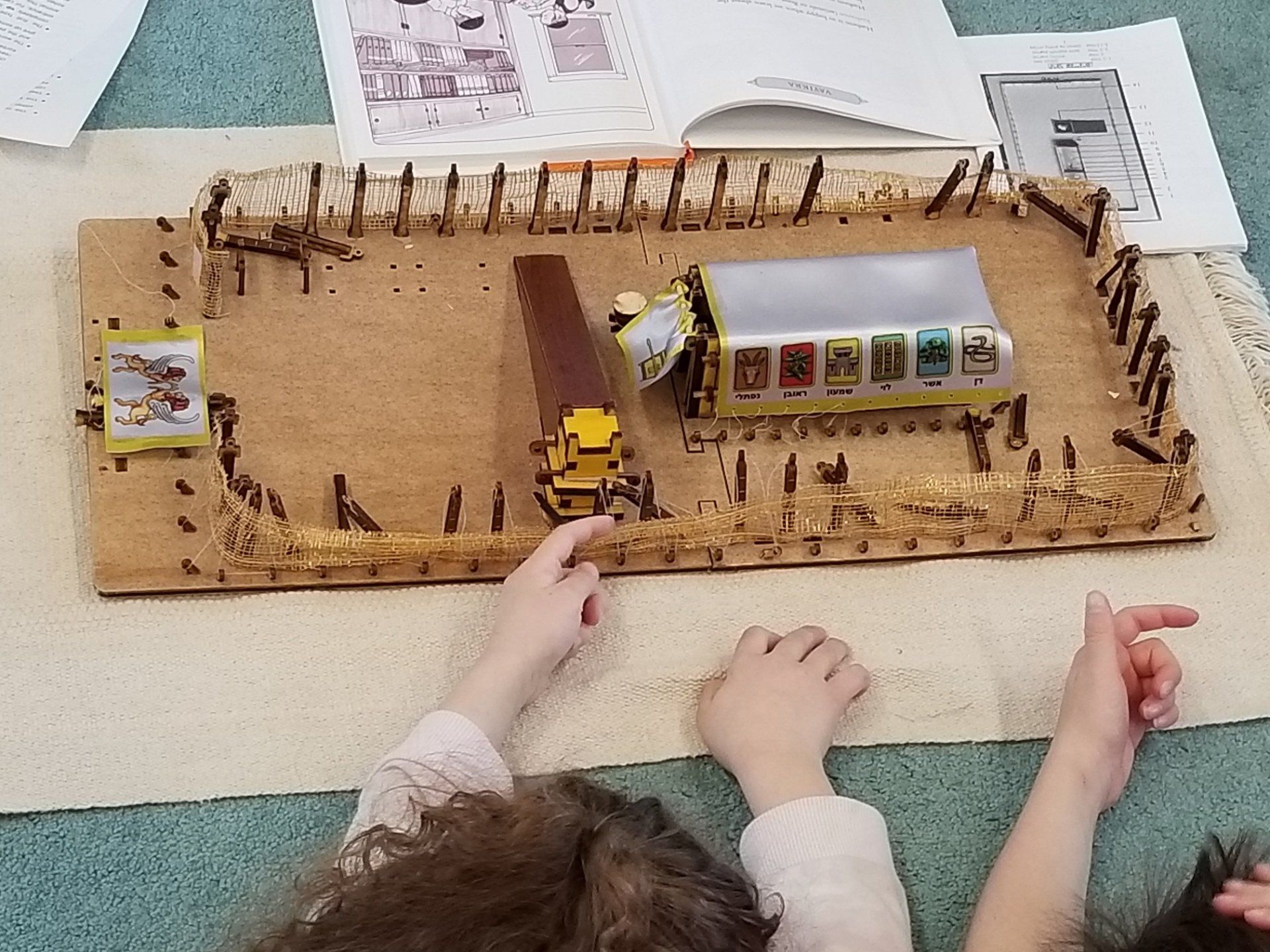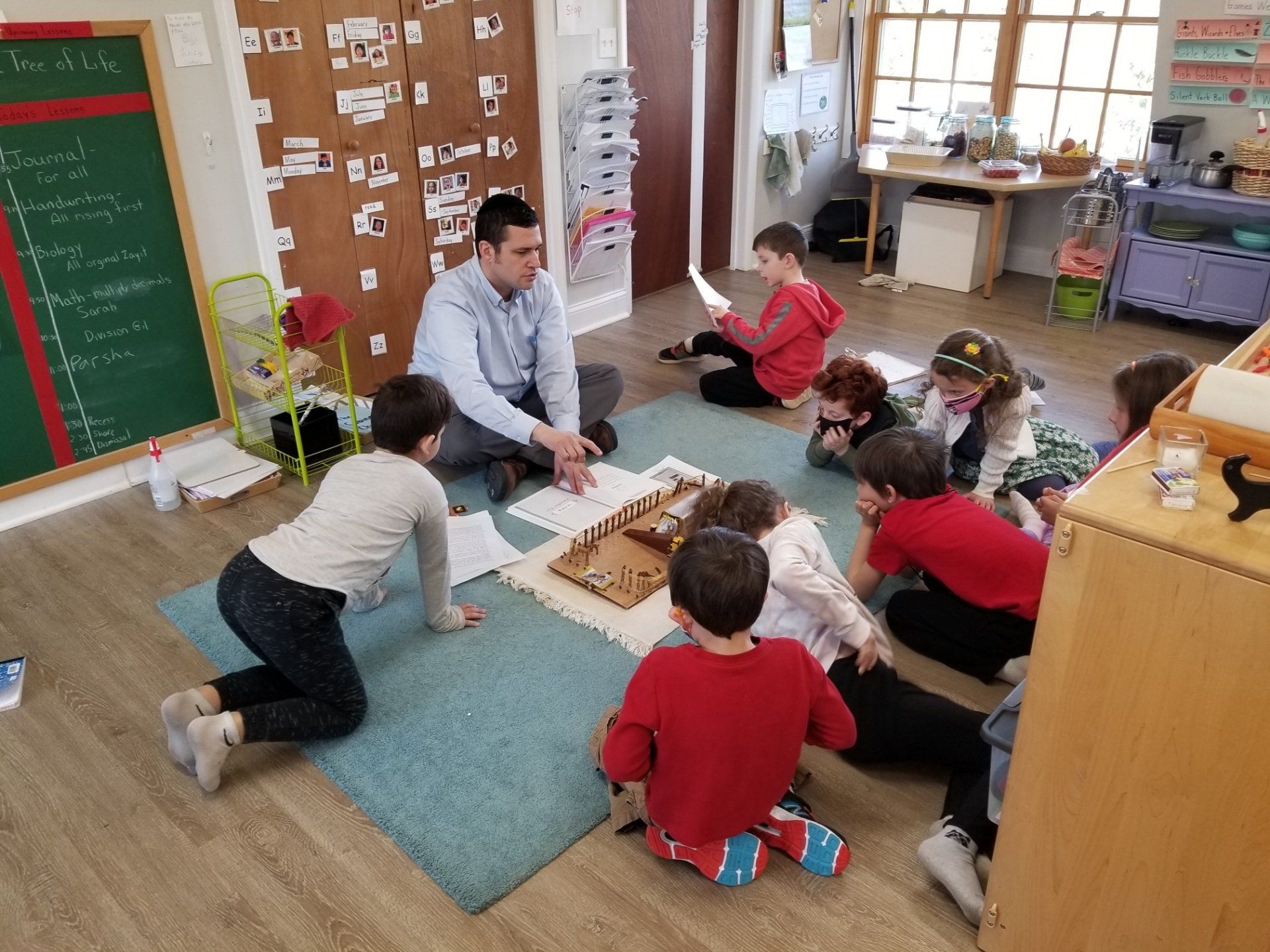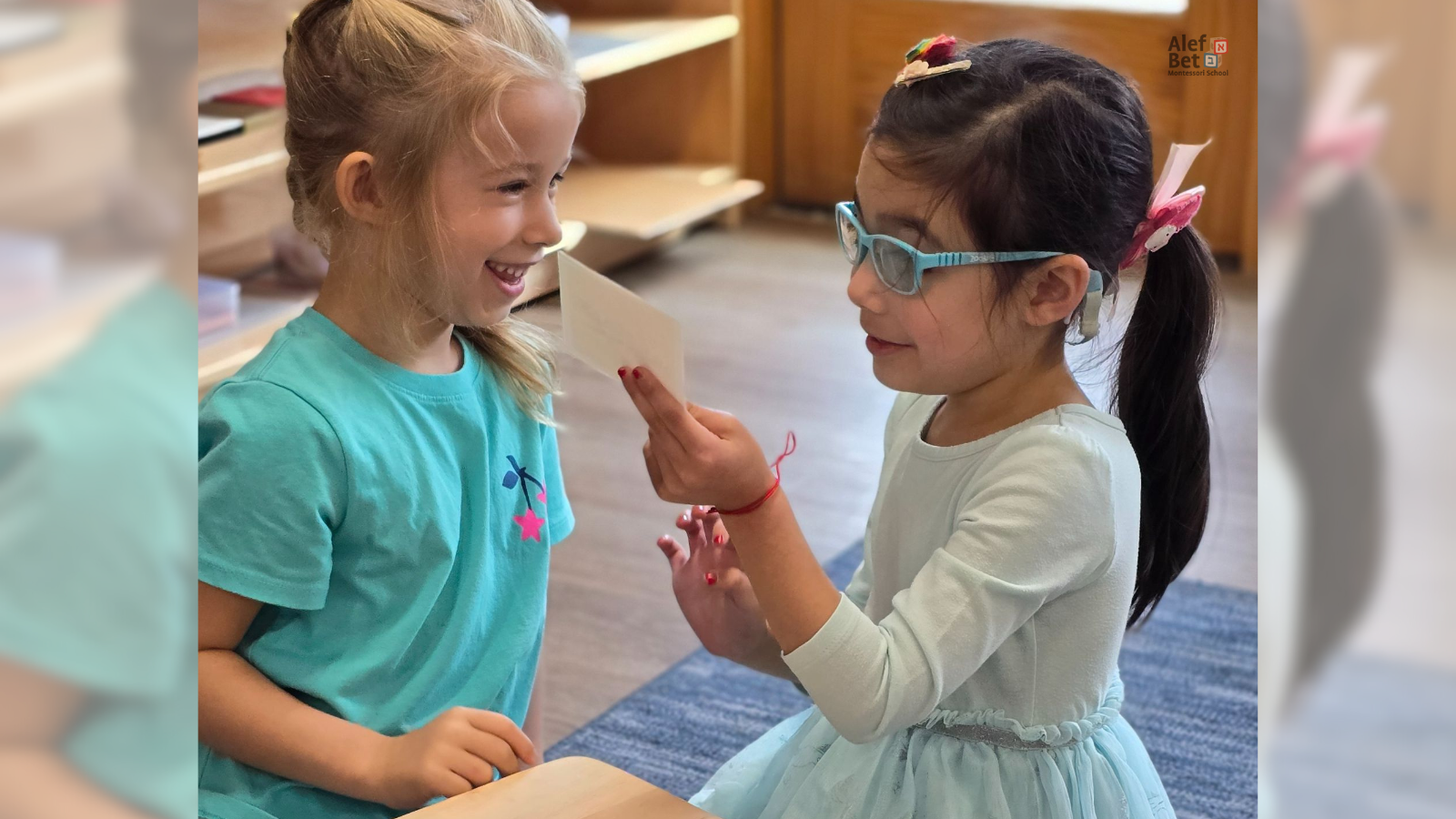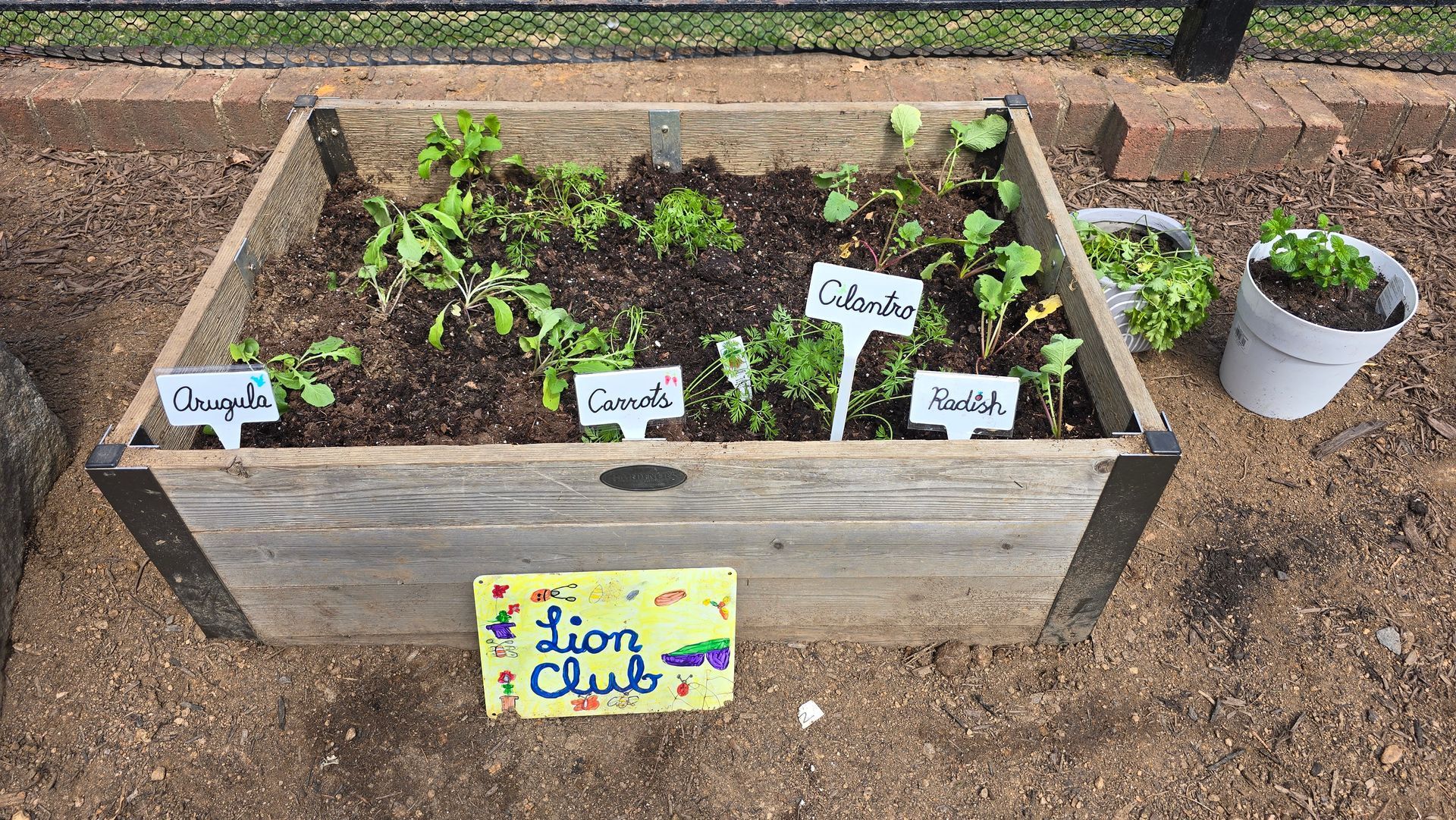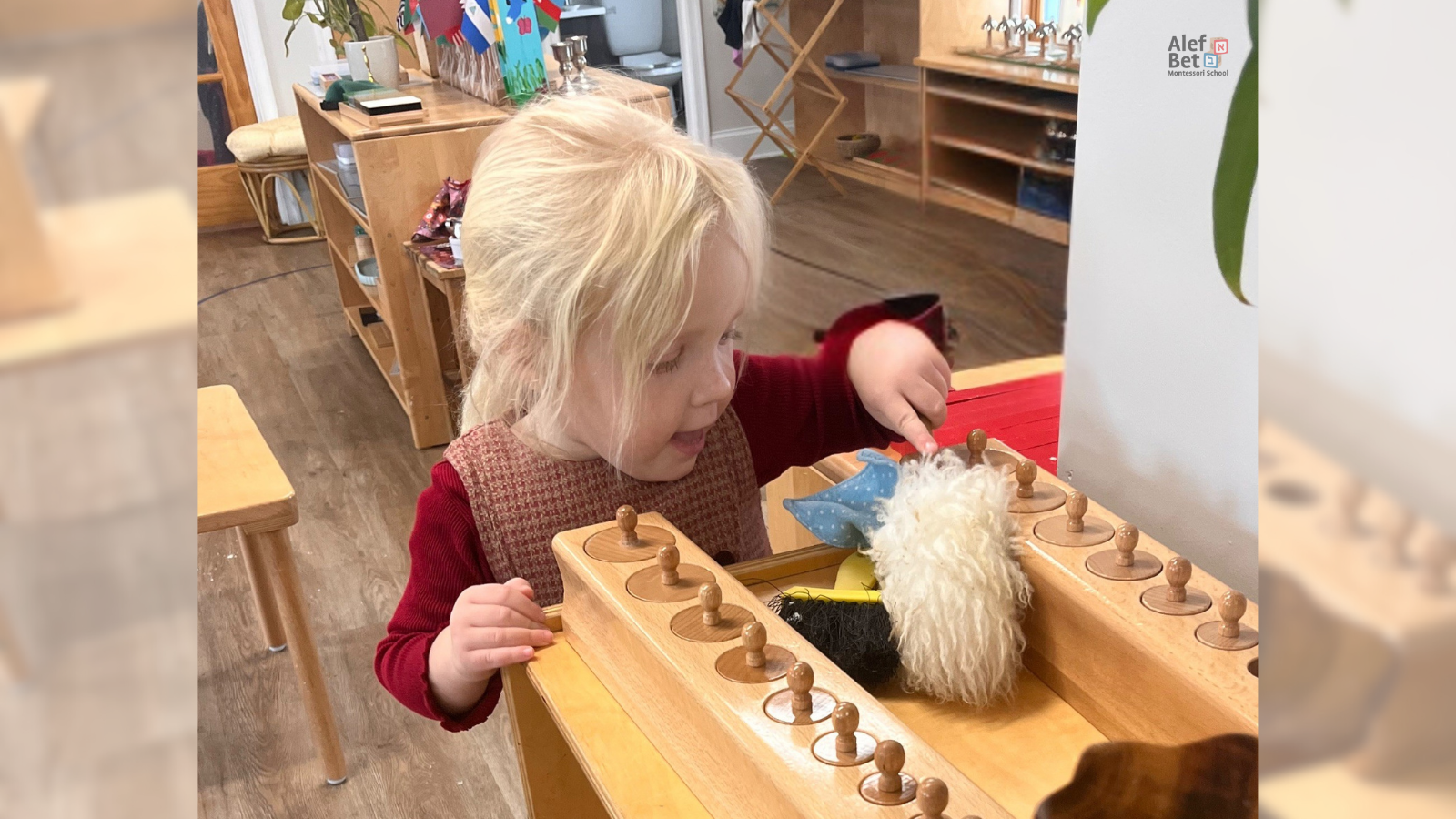Parashat Hashavua (פרשת השבוע) at the Zayit class
This week's Torah portion is Vayikra (ויקרא) - dealing with tough subjects for children
Moreh Jay is working with our Elementary children this week on Parashat Viyikra - the parasha, weekly story, is dealing with Sacrifices at the Mishkan, God's temple. How do you explain such a complex subject to children?
The children in the Zayit class are sitting on the rug around a beautiful model of Hamishkan - God's temple.
They are very exited to see, touch and explore, using all their senses while learning about the weekly Parasha, Parashat Vaikra.
What is in the Parasha?
Parashat "Vayikra" also known as Toras Kohanim- the teaching of the Kohanim, deals with the Korbanos (offerings) brought in the Beis Hamikdash.
What is a Korban?
The class is having a conversation about the deeper meaning of a Korban. Korban is a gift we are giving to God. Moreh Jay is guiding the conversation with questions giving the class some food for thought:
Who is giving the Korbanos?
What kind of Korbanos?
What is the relevance of Korbanos for today? He points out to the place of Korban, and asks: What is Korban, Sacrifice? Where else did we see it? A child says, in the story of Avraham and Yiztchak. The children know the answers and ask more questions: What type of animals do we use? What are the types of Sacrifice other than animals? (grains).
Morah Jay gives an example for giving a gift of a Korban. If I took your bicycle, without asking permission. is that OK? They all knew the answer. A Korban is given in such a case. Ahha, said another child. It is saying I am sorry.
Moreh Jay continues - These things, the animals and grains, are costly.. That means people pay for it. When they bring it to the Temple , what is it? he asked. A Truma (donation) a child immediately answered. It is saying I am sorry with my intention to get closer.
The Hebrew meaning
Now it's the time to get some Hebrew context, Korban=Karov. That means to bring close. We are getting close to god by giving the special gift of a Korban.
The miniature model gives the children the special opportunity to dive into an ancient world in their imagination. They explore and see with their own eyes the structure and materials of the "Mishkan" and the Altar. Learning about the Parasha - the weekly bible story in an interactive and fun way!
Wishing everyone Shabat Shalom
The body content of your post goes here. To edit this text, click on it and delete this default text and start typing your own or paste your own from a different source.
